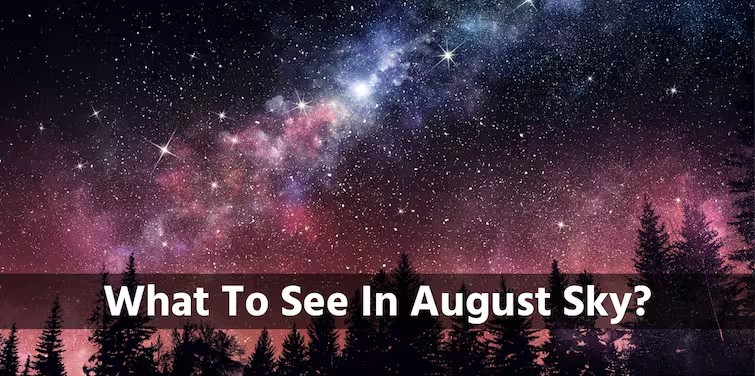
Follow WOWNEWS 24x7 on:

August’s Night Sky Delivers a Cosmic Feast
Skywatchers across India and beyond are in for a dazzling treat this August, as the heavens align to showcase a series of rare and beautiful astronomical events. From the iconic Perseid meteor shower to a radiant full moon and a rare planetary conjunction, the month offers something for every stargazer — whether you're a seasoned observer or simply looking up in wonder.
Key Highlights for August 2025
- The Perseid meteor shower peaks between August 11 and 13, with up to 100 meteors per hour
- A full moon on August 9 may reduce meteor visibility but adds its own luminous charm
- Venus and Jupiter will appear just one degree apart on August 11 and 12, creating a stunning planetary conjunction
- Mercury goes direct on August 11 and reaches its greatest elongation west on August 19
- A rare Black Moon occurs on August 23, marking the third new moon in a single season
Perseid Meteor Shower: Brilliance Meets Moonlight
The Perseids, one of the most anticipated meteor showers of the year, will peak from August 11 to 13. Originating from debris left by Comet Swift-Tuttle, these meteors streak across the sky at speeds of 60 km/second, often leaving bright trails visible to the naked eye.
However, this year’s peak coincides with an 84% full moon on August 9, which may wash out many of the fainter meteors. Still, brighter streaks will be visible in the pre-dawn hours, especially in areas with minimal light pollution. The shower remains active from July 17 to August 24, offering multiple viewing windows.
Venus and Jupiter: A Celestial Kiss
On August 11 and 12, Venus and Jupiter — the two brightest planets in our sky — will appear just one degree apart in the eastern sky before sunrise. This close approach, known as a conjunction, is a rare visual delight. The pairing will be visible to the naked eye and offers a perfect opportunity for astrophotography and casual observation.
Adding to the spectacle, a slim crescent moon will join the planetary duo on August 19 and 20, creating a picturesque alignment in the early morning sky.
Mercury’s Movements and Lunar Milestones
Mercury, which has been in retrograde since July 17, goes direct on August 11. It reaches its greatest elongation west on August 19, making it easier to spot just before sunrise. On August 21, the Crescent Moon will appear near Mercury, offering another visual highlight.
Later in the month, on August 23, the Moon enters its New Moon phase and qualifies as a Black Moon — the third new moon in a season with four. Though invisible to the naked eye, this rare lunar event marks a significant moment in the lunar calendar and is a favorite among astronomy enthusiasts.
Bonus View: The Summer Triangle and Dumbbell Nebula
Throughout August, the Summer Triangle — formed by the bright stars Deneb, Vega, and Altair — will dominate the night sky. Within this triangle lies the Dumbbell Nebula (M27), one of the easiest planetary nebulas to observe. It appears high overhead in the first half of the night and is best viewed with binoculars or a small telescope.
Final Thoughts: A Month to Look Up
August 2025 is a celestial celebration, blending meteor magic, planetary drama, and lunar intrigue. Whether you're watching from a rooftop in Mumbai or a quiet hillside in Himachal, the sky promises moments of awe and wonder. So set your alarms, grab a blanket, and let the universe put on its show.
Source: Chron






